High Renaissance Art
1/6
There's no tags or description
Looks like no tags are added yet.
Name | Mastery | Learn | Test | Matching | Spaced |
|---|
No study sessions yet.
7 Terms
- commissioned by the Sforza of Milan for the refectory (dining hall) of a Dominican abbey
- relationship between the friars eating and a Biblical meal
- only Leonardo work remaining in situ
- linear perspective; orthogonals of ceiling and floor points to Jesus
- apostles in groupings of three; Jesus alone but before a group of three windows that symbolize the Trinity
- experimental combination of paints to yield greater chiaroscuro; paints gean to peel off wall in Leonardo's lifetime and has been restored many times
- great drama of the moment: Jesus says, "One of you will betray me"
- various reactions on faces of apostles; anguish on face of Jesus
- Judas falls back clutching bag of coins, face in darkness
The Last Supper
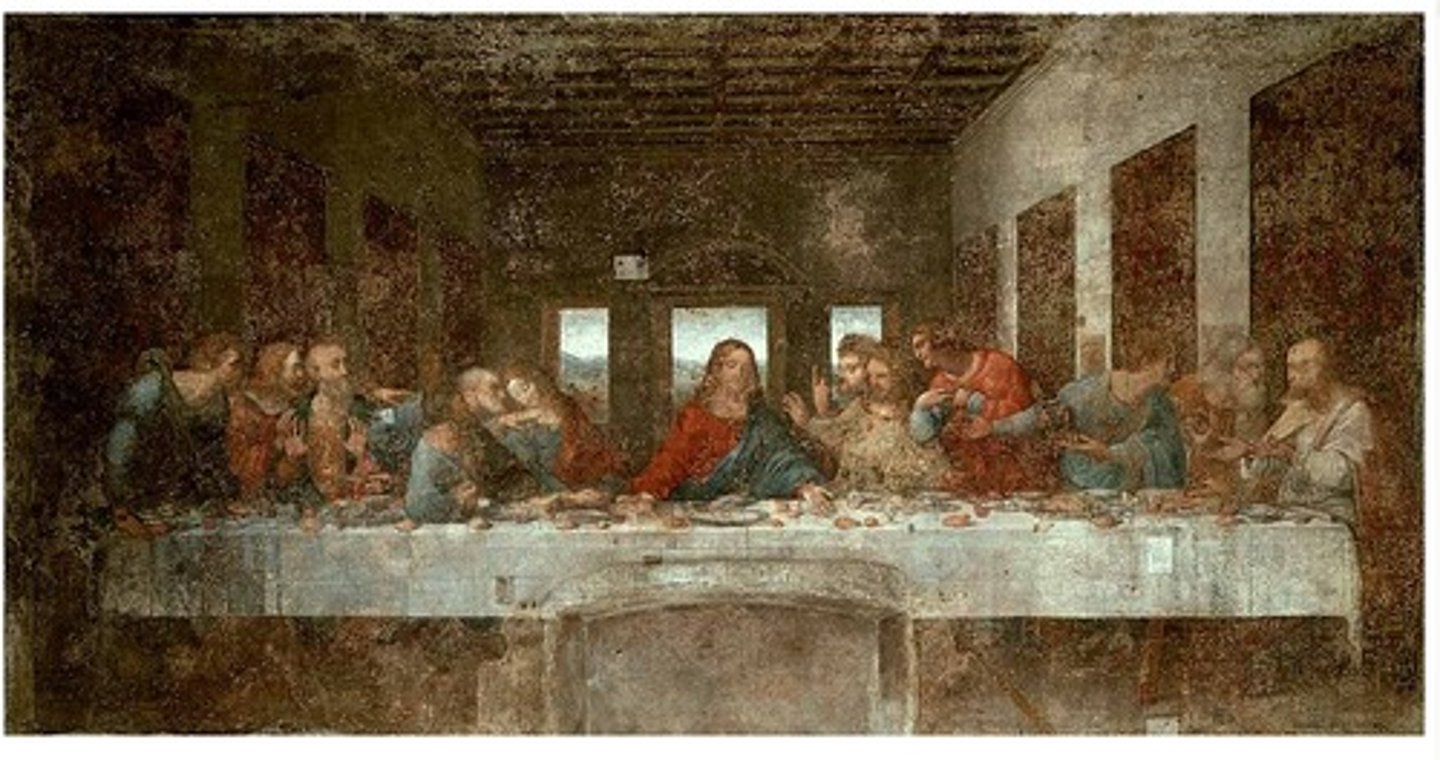
- Sistine Chapel erected in 1472 and painted by quattrocento masters, including Botticelli and Perugino, as well as Michelangelo's teach Ghirlandaio
- function of chapel: place where new popes are elected
- complicated arrangement of figures for ceiling, broadly illustrating first few chapters of Genesis, w/ accompanying Old Testament figures and antique sibyls--based on antique sculptures
- three hundred figures on ceiling, no two in same pose; Michelangelo's lifelong preoccupation w/ male nude in motion
- enormous variety of expression
- painted cornices frame groupings of figures in highly organized way
- many figures (ie the Ignudi) are done for artistic expression > enhance narrative
- acorns motif on ceiling, inspired by crest of patron, Pope Julius II
Sistine Chapel Ceiling
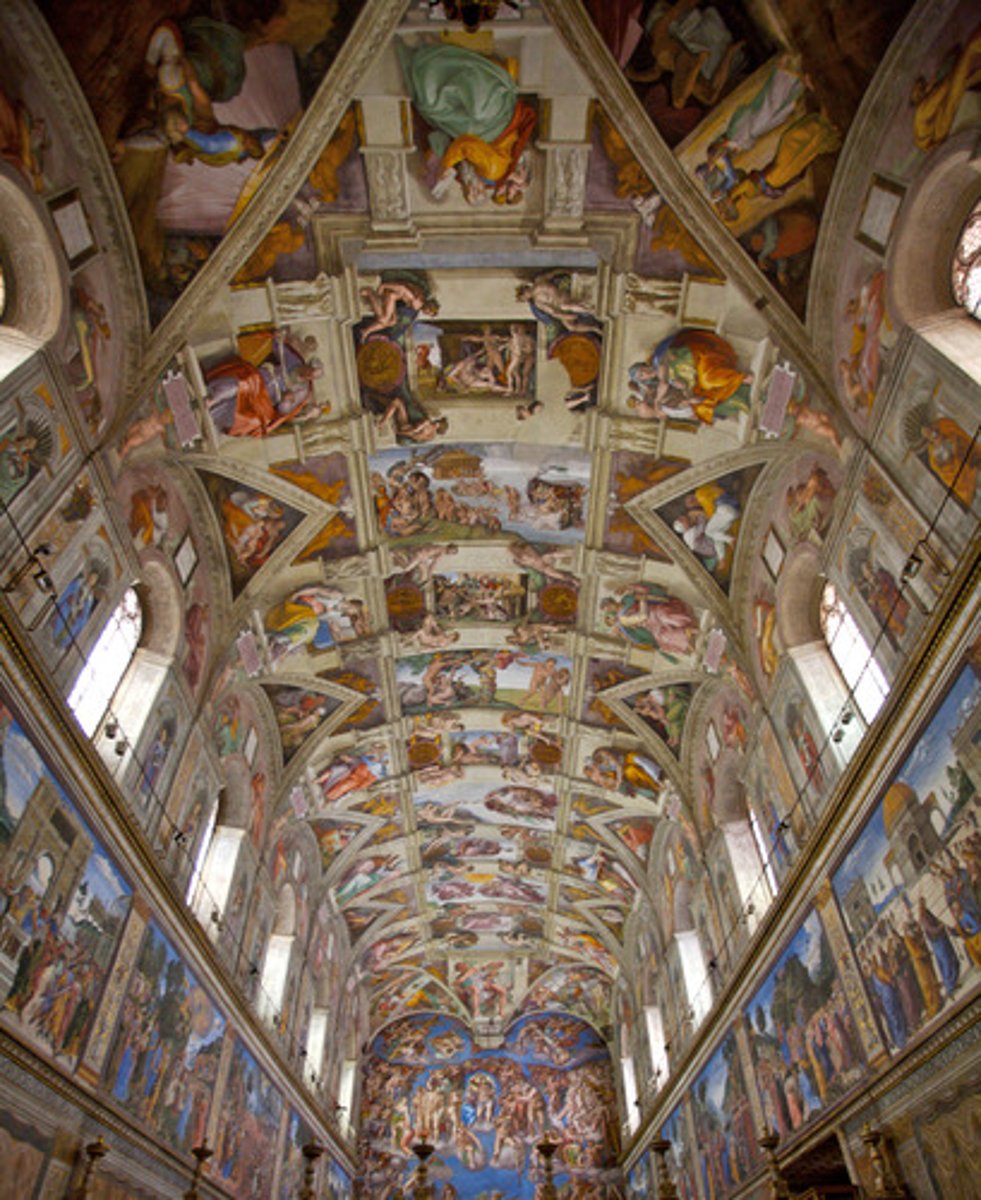
- one of five sibyls on ceiling
- wears Greek style turban
- turns head, as if listening
- expression seems sorrowful
- contrapposto
- holds scroll containing her prophecy
- combination of Christian religious and pagan mythological imagery
Delphic Sibyl
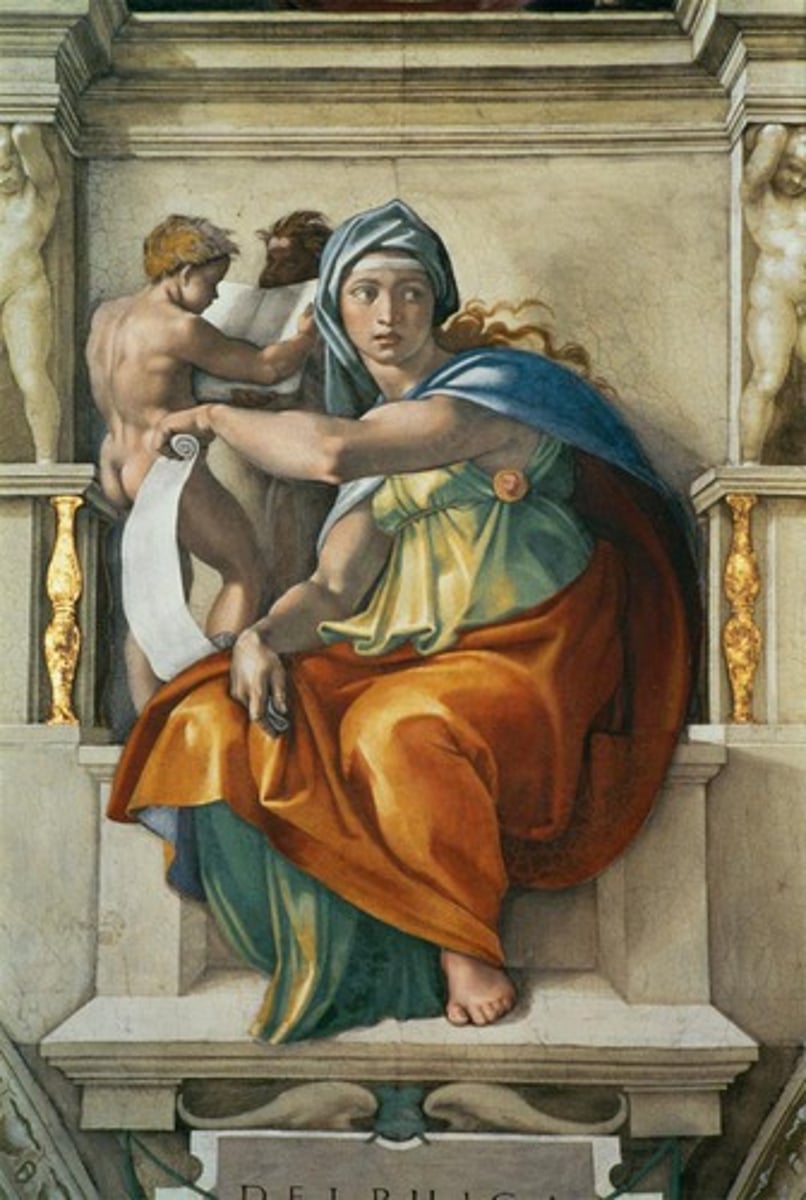
- few remaining survivors cling to mountain tops
- man carrying drowned son to safety, will only meet his son's fate
- over 60 figures; crowded composition
- sculptural intensity of figure style
- ark in background only safe haven
The Flood
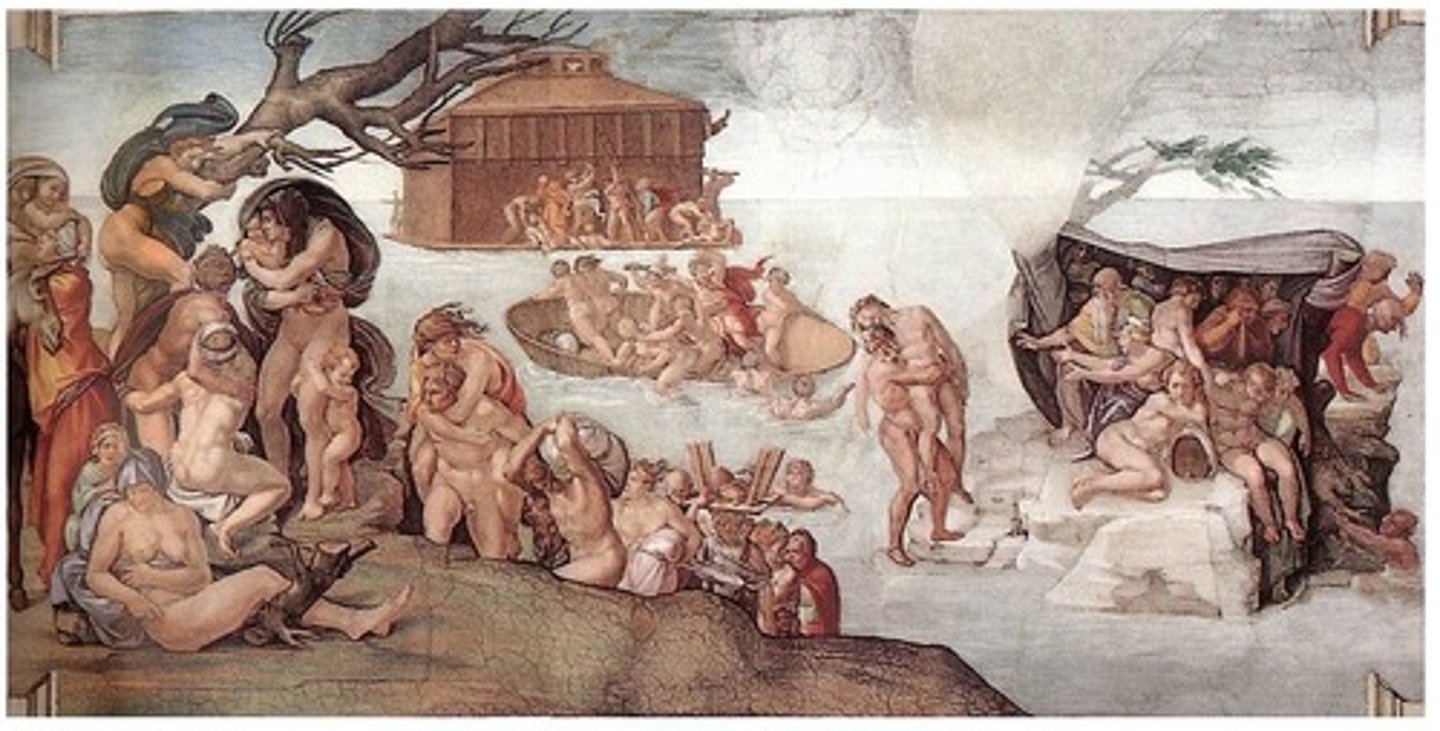
- in contrast to ceiling, no cornice divisions; one large space w/ figures more casually grouped
- mannerism in distortions of body, elongations, crowded groups
- four broad horizontal bands act as unifying element: (1) bottom: left: dead rising, right: mouth of hell (2) second level: ascending elect, descending sinners, trumpeting angels (3) third level: those rising to heaven gathered around Jesus (4) top lunettes: angels carrying the Cross and the Column, instruments used at Christ's death
- Christ in center and gestures defiantly w/ right hand; complex pose
- justice deliver: good rise, evil fall
- lower right-hand corner has figures from Dante's Inferno: Minos and Charon
- St Bartholomew's face modeled on a contemporary critic; St Bartholomew holds his skin, symbol of his martyrdom, but the skin's faceis Michelangelo's; oblique remark about critics who skin him alive w/ criticism
- spiraling composition reaction against High Renaissance harmony of Sistine Chapel ceiling; reflects disunity of Christendom caused by Reformation
Last Judgement
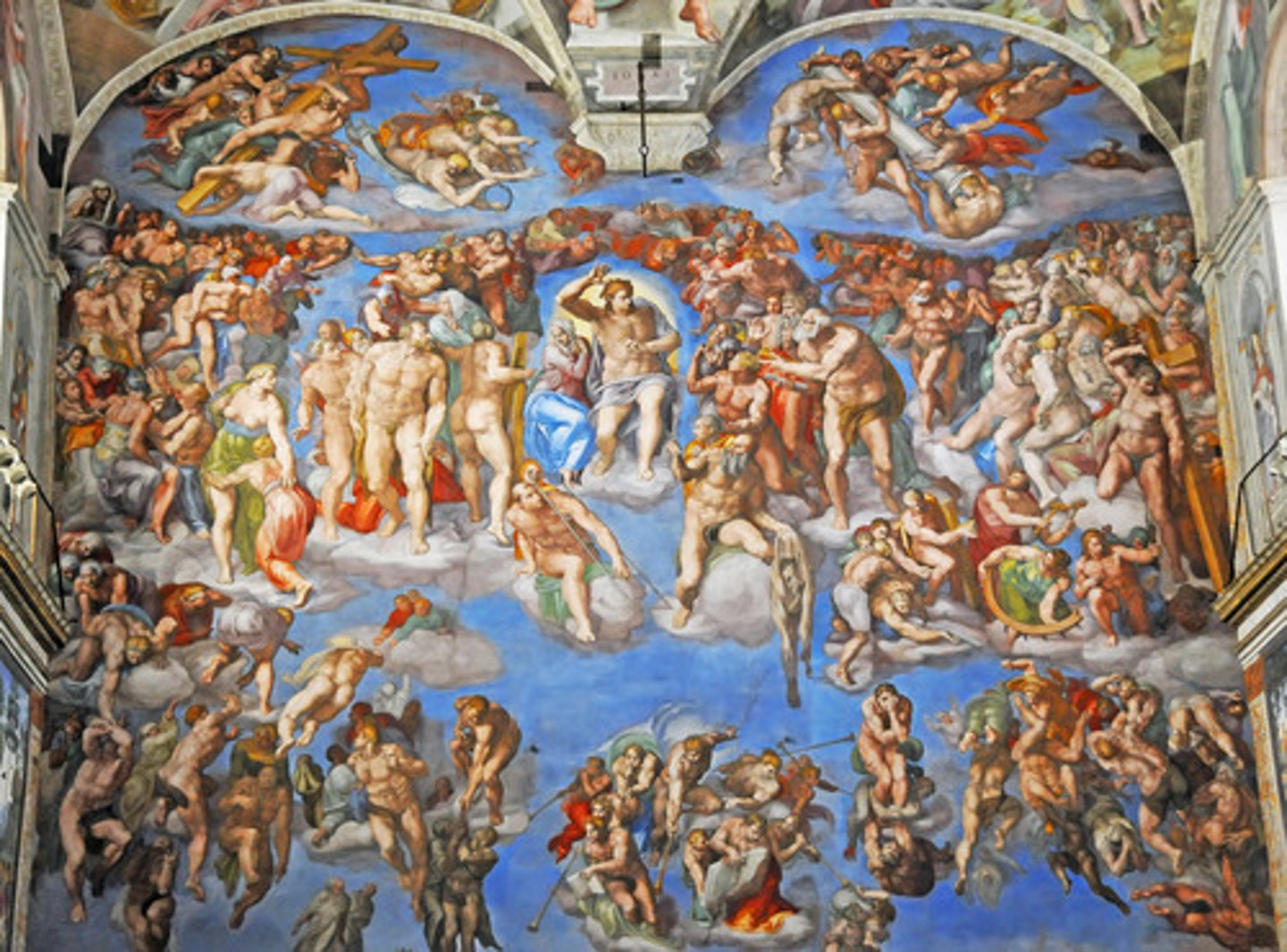
- commissioned by Pope Julius II to decorate his library
- originally called "Philosophy" because pope's philosophy books meant to be housed on shelving below
- one painting in complex program of works that illustrates vastness and variety of papal library
- open, clear light uniformly spread throughout composition
- nobility and monumentality of forms parallel to greatness of figures represented; figures gesture to indicate philosophical thought
- building behind might reflect Bramante's plan for Saint Peter's
- center: plato (w/ features of Leonardo on left, pointing up) and Aristotle
- Bramante, Pope's architect, bald figure of Euclid on lower right
- Raphael in corner at extreme right
- Michelangelo resting on stone block, writing a poem
- overall composition influenced by Leonardo's The Last Supper
School of Athens
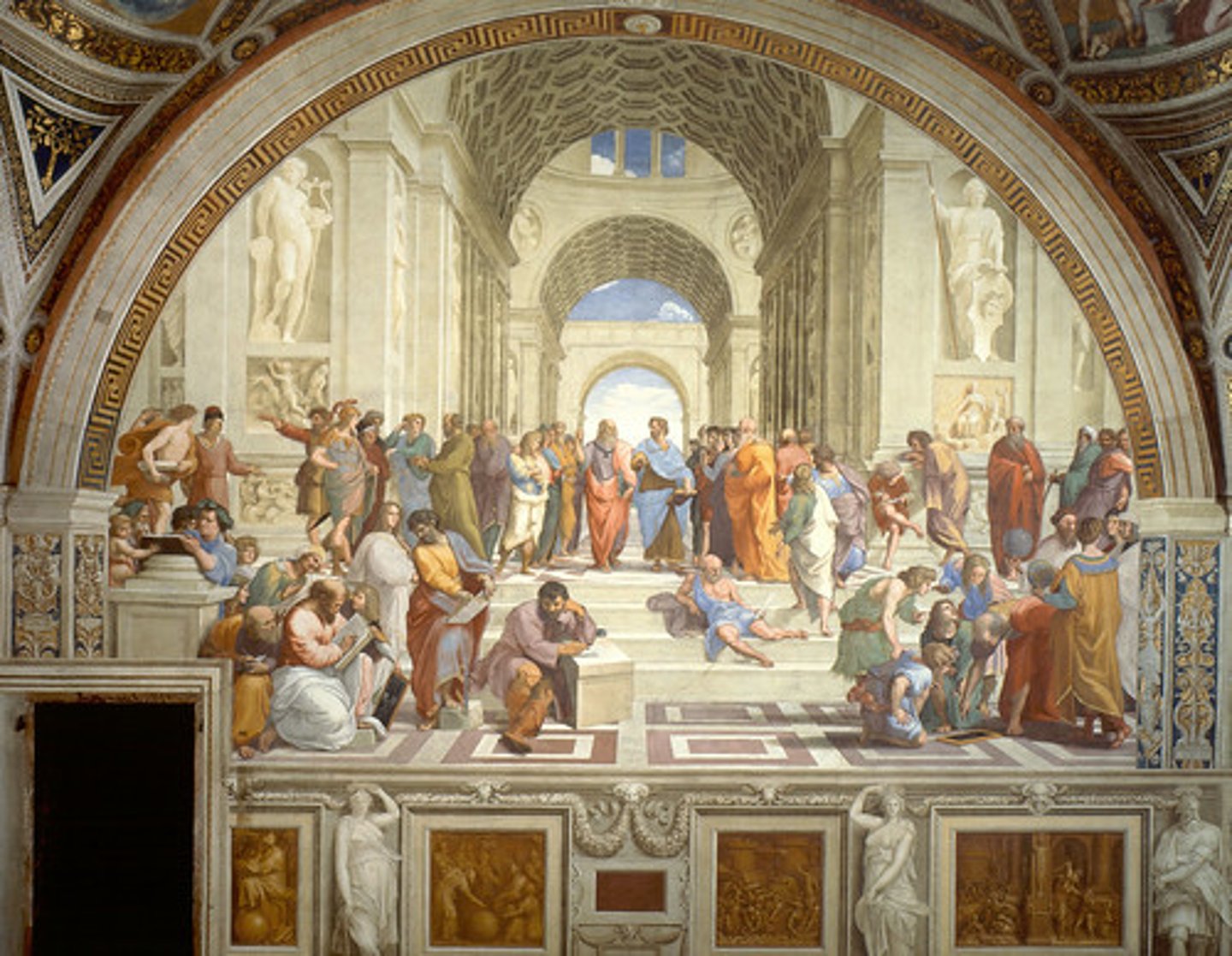
- may not have been a Venus; may have been a courtesan
- sensuous delight in skin tones
- looks at viewer directly
- complex spatial environment: figure placed forward on picture plane, servants in middle space; open window w/ paints in background
- roses contribute to floral motif carried throughout
- dog = faithfulness?
- cassoni
- patron Guidobaldo della Rovere of Urbino
- painting became standard for future reclining female nudes
Venus of Urbino
